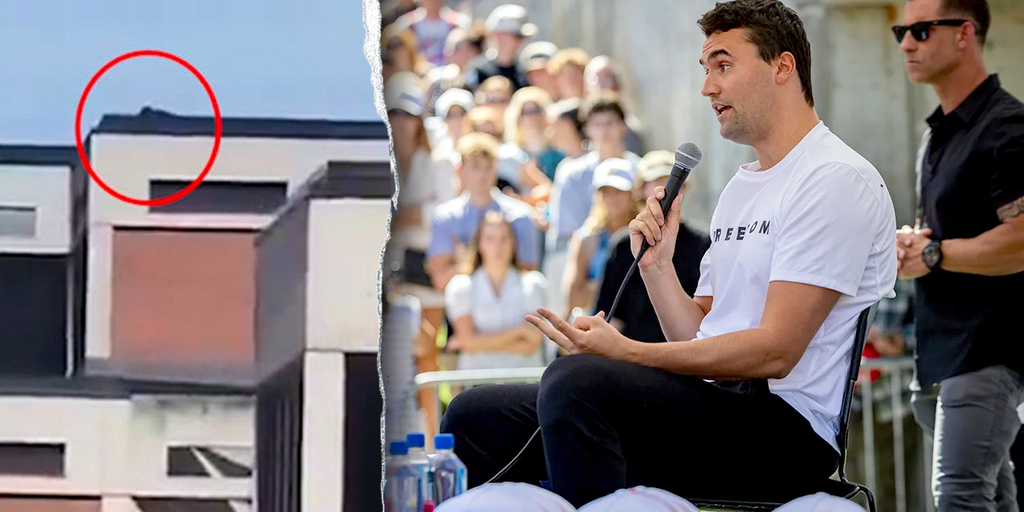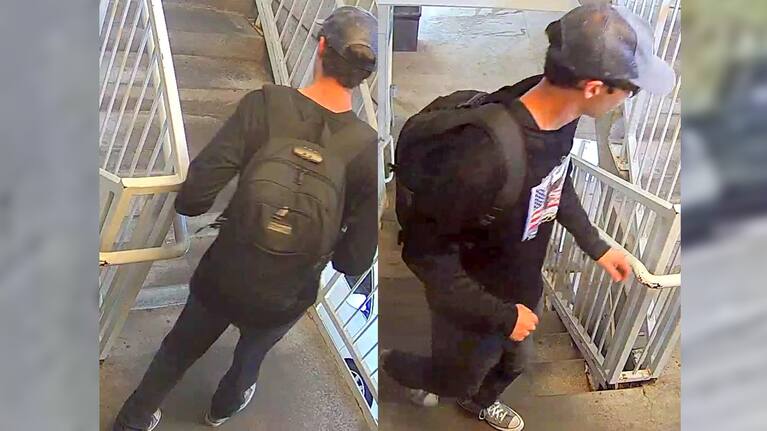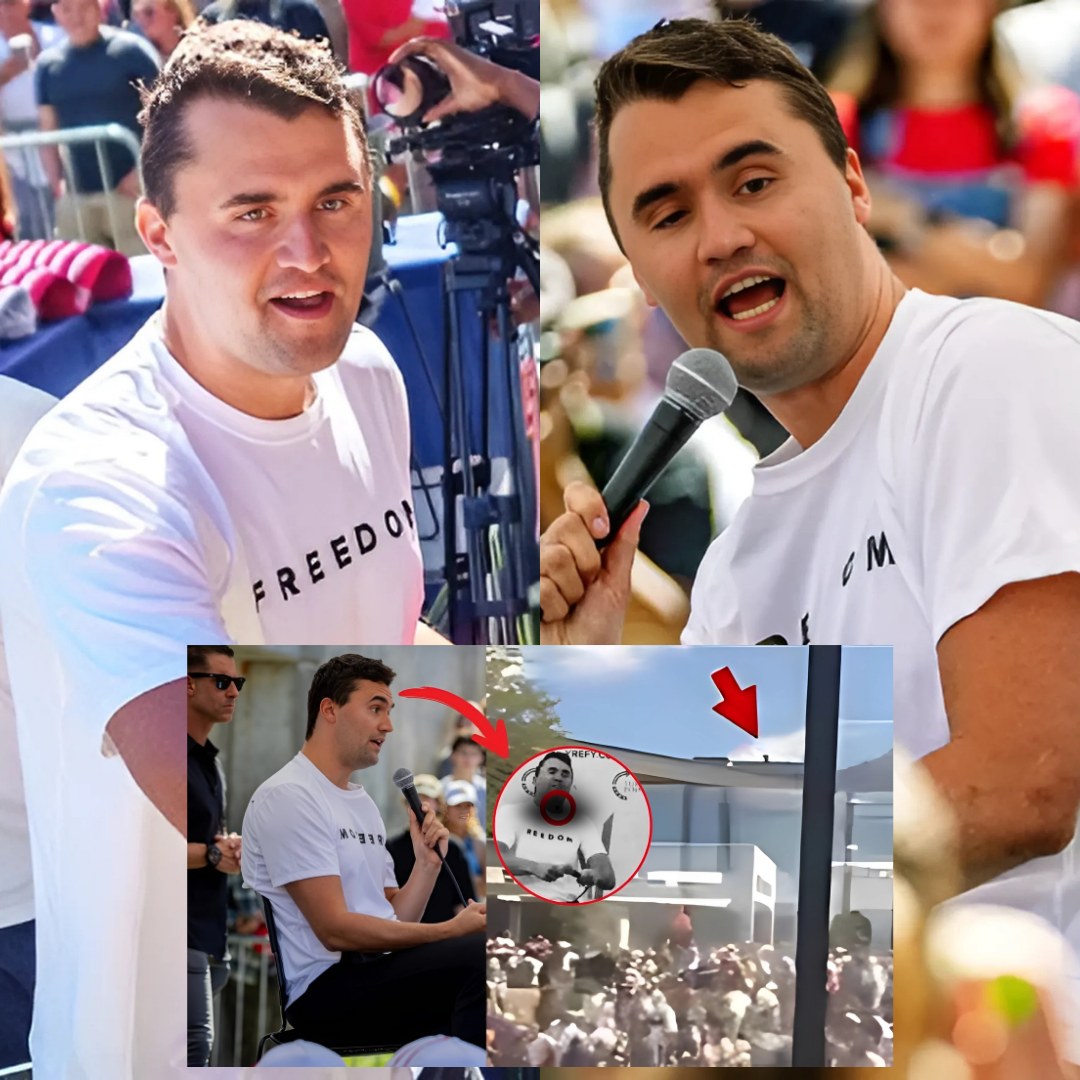STRANGE AUDIO — “Listen closely at the 2:17 mark…” — The leaked 911 call in the Charlie Kirk case has viewers replaying the same chilling moment over and over — The details don’t just contradict the official report, they reveal haunting elements that left many speechless — What was captured outside the script could change the entire story the public thought they knew.
The Leak That Changed Everything
It began quietly, almost too quietly. A late-night forum post, tucked away in the corner of the internet, dropped a link to a file that at first glance looked ordinary: an audio clip labeled
911_KirkIncident_Uncut.mp3. Within minutes, that clip had spread like wildfire. What it contained would not only shake those who dared to press play but would also throw the official narrative surrounding the Charlie Kirk case into complete disarray.
The leaked 911 call was not supposed to exist in this form. According to public records, the emergency call made on the night of Charlie Kirk’s collapse had already been archived, released, and dismissed by officials as routine. The “official” version, a sterile transcript, showed nothing remarkable: a frantic call for help, a dispatcher sending aid, and the arrival of first responders. It was clean, procedural, and forgettable.
But this new recording? It was something else entirely.
From the very first second, listeners knew they were hearing something raw. Static bled into the line. Background voices overlapped in ways transcripts never captured. The tone of the dispatcher — at times urgent, at times unnervingly hesitant — revealed layers of confusion absent from the official narrative. And then, there was the moment.
The 2:17 mark.
Listeners describe it as nothing short of chilling. The call’s energy shifted, voices hushed, and for seven long seconds, all that could be heard was silence. Not the kind of technical silence that comes from a dropped line. This was human. Breathing could still be heard faintly. Movement rustled in the background. Then, faint but undeniable, came the words:
“Don’t let this get out.”
The internet stopped.
Those six words detonated across social media like a bomb. Forums replayed it on loop. Amateur sound engineers ran waveforms to prove authenticity. Meme accounts froze the timestamp, daring followers to “just listen.” Millions did — and millions walked away shaken.
What had been presented as a tragic medical emergency was suddenly under suspicion. The leaked audio contradicted the official account not just slightly, but in ways that made the public wonder whether they had been deliberately misled from the very beginning.

A Narrative in Pieces
For years, Charlie Kirk’s name has been attached to political firestorms, polarizing commentary, and a loyal following that hung on his every word. But the night of his collapse was supposed to be straightforward. At least, that’s what the public was told.
According to the polished press release issued days after the incident, Kirk had experienced a sudden health crisis while surrounded by close associates. Paramedics were called immediately. He was rushed to the hospital. The tragedy, though shocking, was neatly wrapped in medical terminology, the kind that leaves little room for speculation.
Yet here was the leaked 911 call, pulling that story apart thread by thread.
Why did the dispatcher sound so rattled? Why were there overlapping voices in the background, some whispering, some audibly distressed? And most of all: who whispered those words at 2:17, and why?
Experts, journalists, and conspiracy theorists all dove in at once. And what they found only deepened the mystery.

The Public Reacts
On TikTok, one clip featuring the audio racked up over 15 million views in just 24 hours. Hashtags like
#Kirk911Leak and #217Moment trended on X (formerly Twitter). Influencers posted reaction videos, many visibly disturbed after listening.
“It’s the silence for me,” one user commented. “You don’t just pause like that in a life-or-death emergency. Something was happening in that room.”
Another wrote: “The whisper is undeniable. Whoever said it wasn’t panicking. They were giving an instruction. That’s not how emergencies work.”
Podcasters jumped on the story, dissecting every second of the clip. Some argued the silence was nothing more than a technical glitch. Others swore it was evidence of a deliberate cover-up. The fact that the official transcript contained
no mention of any silence, no whisper, no background voices only fueled suspicion.
By the end of the week, even mainstream outlets that had initially ignored the leak were forced to acknowledge it. But their coverage was cautious, careful. Headlines read:
“Controversy Over Alleged 911 Leak” and “Unverified Audio Spurs Online Theories.” For the millions who had heard it themselves, such framing only reinforced the feeling that something was being hidden.

Behind the Curtain
Insiders began whispering too. Anonymous posts on encrypted channels claimed that the call had been edited before being archived. A hospital worker, speaking off the record, insisted that multiple versions of the audio existed — one “clean” and one “raw.”
And then came the most explosive claim of all: that the missing 30 seconds from the call — a chunk of audio that appeared to be deliberately cut — contained not just whispers, but actual names.
One alleged insider wrote:
“If you think the whisper at 2:17 is bad, you should hear the part they spliced out. Names. Orders. It wasn’t a medical emergency. It was management.”
Of course, none of this could be independently verified. But in the world of viral leaks, perception matters more than proof. And the perception now was that the Charlie Kirk incident was not what it seemed.

Experts Step In
Former dispatchers analyzed the tape, pointing out anomalies.
“The breathing patterns are consistent with someone covering the phone, intentionally or not,” one explained. “But the pause, the silence — that’s not normal protocol. Dispatchers are trained to keep communication flowing. Silence in that moment is alarming.”
A forensic audio specialist suggested that the recording was authentic, noting no signs of tampering in the waveform itself. “If this is a fake,” he said, “it’s one of the best I’ve ever seen. But everything points to this being real.”
Meanwhile, political commentators couldn’t resist weighing in. Some saw the leak as proof of a broader conspiracy. Others accused rival factions of exploiting tragedy for clicks. But no matter the spin, one fact was unavoidable: the leaked 911 call had become impossible to ignore.
Whispers, Missing Seconds, and the Billionaire Connection
The first shockwave from the leaked 911 audio may have been the chilling silence and whispered phrase at the 2:17 mark, but the aftershocks kept coming. The internet was quick to demand answers: Why was there a missing 30-second gap in the middle of the recording? And who decided which version of the call was “fit” for the public?
If the official transcript had been straightforward, sterile, and “by the book,” then the leaked tape was jagged, raw, and uncomfortably human. And it was in those rough edges that the truth seemed to bleed through.
The Case of the Vanishing 30 Seconds
Audio technicians who analyzed the leaked clip confirmed something the public had already noticed: there was an unnatural break. Between the 3:45 and 4:15 marks, the sound jumped abruptly.
On casual listen, it could be dismissed as static, a line glitch, or just poor archiving. But when slowed down and examined frame by frame, the waveform told another story: compression artifacts, subtle but deliberate cuts, and an unmistakable loss of continuity.
One Reddit user described it best:
“Imagine you’re watching a movie, and suddenly it skips ahead. You don’t just lose dialogue — you lose context. Whatever happened in that missing 30 seconds is the heart of this case.”
So, what could possibly have been cut?
Insider Claims: “Names Were Spoken”
It didn’t take long for anonymous insiders to surface. One account, claiming to be from a former dispatcher, alleged that the missing section included a series of names. Not medical terms. Not emergency protocols. Names.
“They weren’t talking about CPR. They weren’t talking about transport. They were arguing about who was there and what had been seen. A supervisor’s name was mentioned. And another name that, if true, connects directly to billionaire donors.”
Of course, these statements were unverifiable. But the possibility alone was enough to ignite a firestorm. Suddenly, the leaked 911 audio wasn’t just about an unexplained silence. It was about power, influence, and people in very high places.
Enter Candace Owens
If there was one figure who could pour gasoline on this already raging blaze, it was Candace Owens. Known for her uncompromising style and relentless pursuit of “hidden truths,” Owens wasted no time.
On her podcast, she played the leaked tape live on air. She told her millions of listeners:
“At 2:17, you hear it. At 3:45, you don’t. And that silence — that cut — that missing piece — it tells you everything you need to know. They didn’t want you to hear the truth. So they buried it.”
She went further, suggesting that the names allegedly mentioned in the missing section tied directly to what she called “billionaire pressure groups” operating behind the scenes. While careful not to name names outright, her allusions were clear enough for her audience. Screenshots of donor rosters and event photos flooded Telegram and X within minutes.
“Charlie Kirk was in meetings he didn’t want to be in,” Owens declared. “Meetings arranged by men who write the checks. And when he pushed back, the pressure grew unbearable.”
Political Fallout
The leaked audio had already shaken the public. But once Candace Owens added her voice, the political establishment scrambled to respond.
Some conservative commentators urged caution, framing the leak as “unverified” and “potentially manipulated.” But others quietly admitted that even if the recording was fake, the damage had already been done.
The left, predictably, seized on the chaos. Columnists mocked the “conspiracy circus” while still acknowledging the tape’s viral grip. Meanwhile, moderates found themselves uncomfortably caught in the middle. Was the leak evidence of manipulation? Or was it, in fact, a cover-up unraveling before their eyes?
As one Washington insider put it:
“The problem isn’t whether the audio is real. The problem is that millions of people already believe it’s real. And once that belief sets in, it doesn’t matter what the official story says. The narrative has changed.”
The Human Cost
Lost in the frenzy was the simple fact that Charlie Kirk — whether seen as a firebrand, a provocateur, or simply a man who collapsed under mysterious circumstances — was at the center of it all. His supporters flooded forums with grief and outrage. His critics whispered about karmic justice. But across the divide, one question lingered: Did we witness a tragedy, or was it something more?
The leaked 911 call didn’t answer that question. Instead, it cracked it wide open.
A mother in Texas wrote on Facebook:
“I don’t care what side you’re on. I don’t care if you loved him or hated him. When I heard that whisper, my blood ran cold. That wasn’t the sound of help arriving. That was the sound of someone trying to shut this down.”
Experts vs. Theories
Audio forensics experts continued to weigh in. One group claimed the whisper at 2:17 was nothing more than a background voice misheard in the chaos. Another insisted the missing 30 seconds were “likely due to standard redaction for privacy reasons.”
But such explanations only fueled suspicion. Why redact a 911 call if it was just a medical emergency? Why cut out names unless those names mattered?
Theories multiplied:
-
That the missing 30 seconds revealed a confrontation between Kirk and someone in the room before paramedics arrived.
-
That a billionaire donor’s aide was present and demanded secrecy.
-
That the dispatcher themselves was ordered to edit the tape before it entered official archives.
And then came the darkest theory of all: that the leaked tape wasn’t the full story — but only a glimpse of something even bigger.
The Next Domino
As journalists dug deeper, whispers began about surveillance footage from outside the building where Kirk collapsed. Allegedly, a camera had captured movement at the same time as the 911 call — movement that contradicted witness statements.
If true, this meant the leaked audio wasn’t just about whispers and missing time. It was about evidence, hard evidence, that directly challenged the official narrative.
The problem? That footage remained locked away. And those who had supposedly seen it were either refusing to speak — or being silenced.
